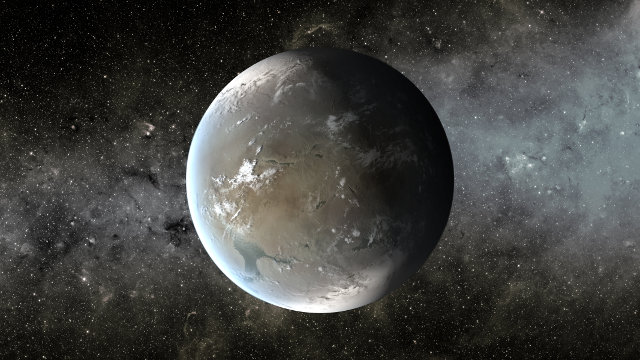
An article published in the magazine “Astrobiology” describes a research on the exoplanet Kepler-62f. A team led by UCLA astronomer Aomawa Shields conducted a number of studies on this planet and, after creating various computer models, concluded that it has the potential to support life forms similar to our type.
The planet Kepler-62f was discovered in 2013 by NASA’s Kepler space telescope together with four other planets orbiting the star Kepler-62, which is about 1,200 light years from Earth. From the beginning, among the five planets discovered Kepler-62f seemed the most interesting but the information about it were really limited, meaning that it was a super-Earth with an estimated size 40% greater than the Earth and that its orbit was within its star’s habitable zone.
Aomawa Shields has been working for some time in search of an exoplanet that is potentially habitable and last year explained it in a Ted talk that was very successful. To try to understand the potential of a planet she developed with her colleagues some computer models to study their orbits and to simulate the composition of its atmosphere.
The individual models already existed but for the first time the results were combined to study an exoplanet. A model called HNBody was used to calculate the possible shapes of Kepler-62f’s orbit. Climate models called Community Climate System Model and Laboratoire de Dynamique Météorologie Generic were used to simulate the possible weather conditions on the planet.
A key element for Kepler-62f to have liquid water is the amount of carbon dioxide present in its atmosphere. On Earth, this gas makes up only 0.04% of the atmosphere, but Kepler-62f receives less energy from its star because it’s farther away from it than the Earth is from the Sun.
The consequence is that much more carbon dioxide would be needed to ensure a greenhouse effect sufficient to retain the heat needed to have liquid water. According to the calculations, the atmosphere of Kepler-62f needs to be from three to five times thicker than the Earth’s and to be made up almost exclusively of carbon dioxide to have those conditions.
These are theoretical models that indicate that the planet Kepler-62f would be habitable under certain conditions. Nevertheless this study raised great enthusiasm for the proposed results. It’s certainly important to develop computer models to try to interpret the data available on exoplanets but we need to improve them and above all to look for verifications with new observations with the next-generation instruments.

